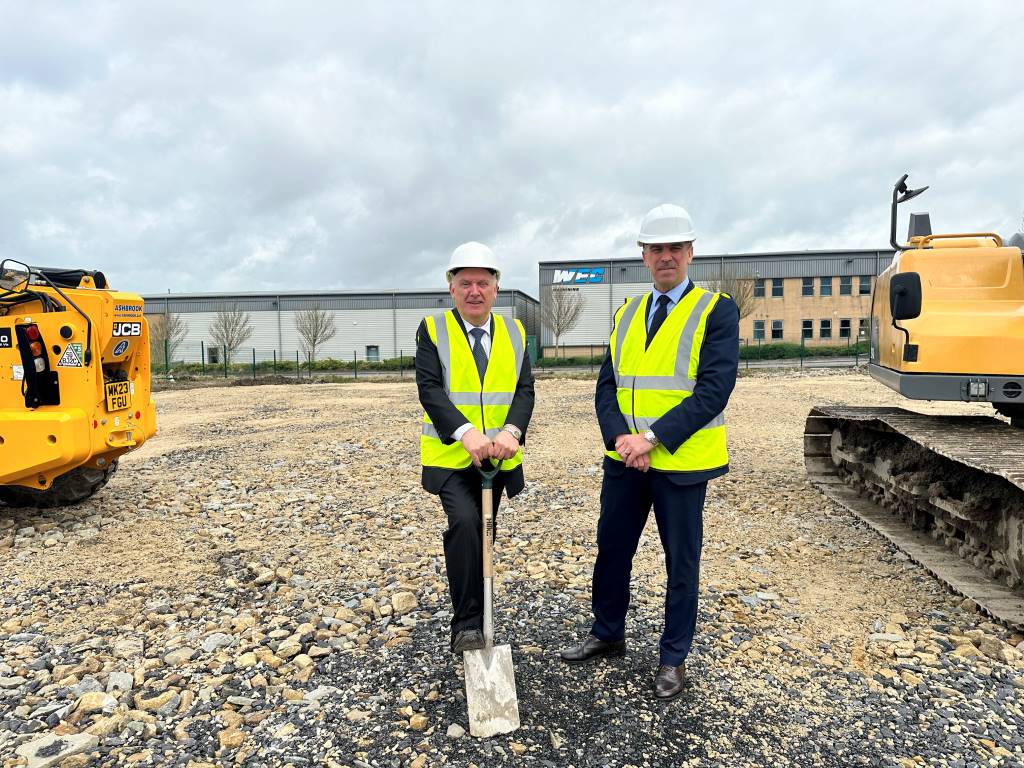A new generation of factory connectivity

The Wireless Broadband Alliance (WBA), the body leading development of next generation Wi-Fi services, today confirmed the successful completion of its phase one trial of Wi-Fi 6 infrastructure and services at the Mettis Aerospace factory in the UK.
The Wireless Broadband Alliance (WBA), the body leading development of next generation Wi-Fi services, today confirmed the successful completion of its phase one trial of Wi-Fi 6 infrastructure and services at the Mettis Aerospace factory in the UK.
The trial was the first of its kind in the world and an important part of the WBA’s Wi-Fi 6 test and development program. Tests included applications of 4K video streaming, large scale file transfers, messaging and voice/video communications as well as the first stage of Internet of Things (IoT) sensor and mixed reality testing.
Wi-Fi 6 is the next generation of Wi-fi technology that will become available. It is intended to speed up Wi-Fi speeds but more importantly allow many more devices to be connected to a Wi-Fi signal.
Superior streaming
Previous implementation tests with Wi-Fi failed to work in Mettis’ challenging factory environment. During the trial, speeds of 700Mbps using 80MHz channels were achieved and low latency applications, like video calling and video streaming, performed well with results below 6ms. These results proved that Wi-Fi 6 infrastructure can operate well in the presence of interference and noise in a complex and challenging factory environment as well as deliver high quality services for monitoring and maximising machinery performance, minimising downtime, and improving communications on the factory floor.
“The completion of this initial phase marks a significant milestone for the adoption of Wi-Fi 6,” said WBA CEO, Tiago Rodrigues. “The Mettis facility is an especially challenging environment for wireless communications with furnaces, presses and heat, a lot of moving heavy machinery and the presence of dust and in-air particulates. Nevertheless, the field tests in this highly charged atmosphere have proven that Wi-Fi 6 technology works well and can play a vital role within the industrial enterprise and IoT ecosystem. If Wi-Fi 6 can deliver highly reliable, high quality and high bandwidth communications in this type of factory environment, then it can deliver it almost anywhere,” he added.

“The Wi-Fi 6 infrastructure installed as part of the trials has exceeded our expectations in terms of performance, reliable connectivity and consistent coverage across the target area,” said Dave Green, Head of IT, Mettis Aerospace. “We are seeing immediate benefits in terms of the data we’re now able to collect and use. Moving forward, we will be able to vastly increase the data we collect from devices across our business, enhancing our manufacturing processes, reducing variability and increasing productivity.”
The trial took place at the 27-acre Mettis Aerospace facility in the West Midlands in collaboration with WBA member companies including Broadcom, Cisco, iBwave and Intel as well as Concurrent Engineering and Keysight. Mettis Aerospace supplies companies such as Airbus, Boeing and Rolls-Royce.
Syncing manufacturing systems
The Wi-Fi 6 technology had to prove it was able to provide total connectivity across the factory floor and enable improved synchronisation of factory floor machinery and equipment with centralised monitoring and control systems. This required the Wi-Fi network to deliver real-time high bandwidth communications, with very low latency and clear prioritisation of data across a large-scale, complex factory environment.
As part of the project, Cisco provided 11 Catalyst 9100 access points (along with WLC and POE Catalyst switches) configured to ensure persistent and consistent signal reliability throughout the day under regularly changing conditions. To help achieve this, iBwave undertook a site survey of the manufacturing floor recorded noise level measurements (with machinery on and off) and gathered essential details about obstructions and the variability of the environment. This was critical to the success of the project due to the prevalence of metal surfaces that can disrupt radio (RF) connectivity.

Cisco and Mettis worked together using survey results to guide the deployment of the access points and to optimise the configuration for the environment. Using devices that included smartphones, tablets, laptops and webcams – equipped with the Broadcom and Intel Wi-Fi 6 chipset, a series of tests were performed using Ix Chariot software to assess and troubleshoots the networks and the applications both before and after the deployment.
Mobile machine monitoring
Concurrent Engineering’s PTC Vuforia augmented (mixed) reality software was used by the maintenance team to enable ‘walk- by’ machine monitoring. This test showed it was possible to position a tablet alongside a piece of machinery and get an instant reading of the real-time pressure and performance of the machine. In future, this will speed fault-finding and diagnosis, aid preventative maintenance and minimise machine downtime.
The Mettis factory also lies within the region selected by the UK Government as a 5G test bed for manufacturing. The WBA test results clearly demonstrate the important role Wi-Fi 6 can play within the broader 5G ecosystem. Phase Two of the trial will focus on further tests of the Mixed reality applications and IoT sensing of key assets.
The vision of the Wireless Broadband Alliance (WBA) is to drive seamless, interoperable service experiences via Wi-Fi within the global wireless ecosystem. WBA’s mission is to enable collaboration between service providers, technology companies and organisations to achieve that vision. WBA undertakes programs and activities to address business and technical issues, as well as opportunities, for member companies.
Wireless Broadband Alliance https://wballiance.com
Mettis Aerospace www.mettis-aerospace.com














